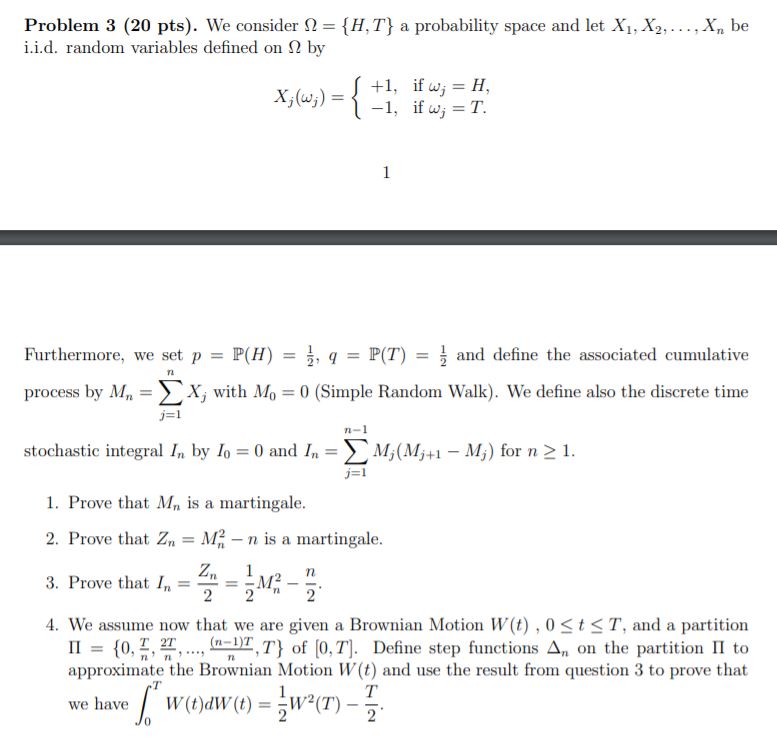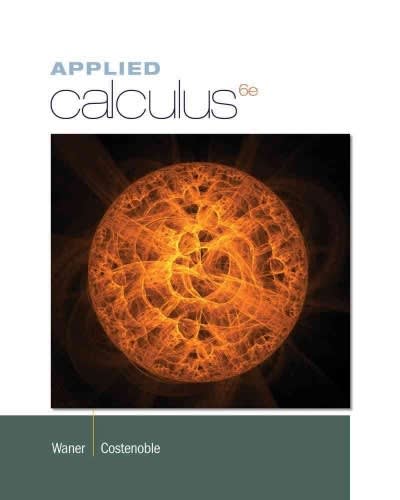Question
We consider = {H, T} a probability space and let X1, X2, . . . , Xn be i.i.d. random variables defined on by Xj
We consider = {H, T} a probability space and let X1, X2, . . . , Xn be i.i.d. random variables defined on by Xj (j ) = +1, if j = H, 1, if j = T. 1 Furthermore, we set p = P(H) = 1 2 , q = P(T) = 1 2 and define the associated cumulative process by Mn = Xn j=1 Xj with M0 = 0 (Simple Random Walk). We define also the discrete time stochastic integral In by I0 = 0 and In = Xn1 j=1 Mj (Mj+1 Mj ) for n 1. 1. Prove that Mn is a martingale. 2. Prove that Zn = M2 n n is a martingale. 3. Prove that In = Zn 2 = 1 2 M2 n n 2 . 4. We assume now that we are given a Brownian Motion W(t) , 0 t T, and a partition = {0, T n , 2T n , ..., (n1)T n , T} of [0, T]. Define step functions n on the partition to approximate the Brownian Motion W(t) and use the result from question 3 to prove that we have Z T 0 W(t)dW(t) = 1 2 W2 (T) T 2 .

Step by Step Solution
There are 3 Steps involved in it
Step: 1

Get Instant Access to Expert-Tailored Solutions
See step-by-step solutions with expert insights and AI powered tools for academic success
Step: 2

Step: 3

Ace Your Homework with AI
Get the answers you need in no time with our AI-driven, step-by-step assistance
Get Started


